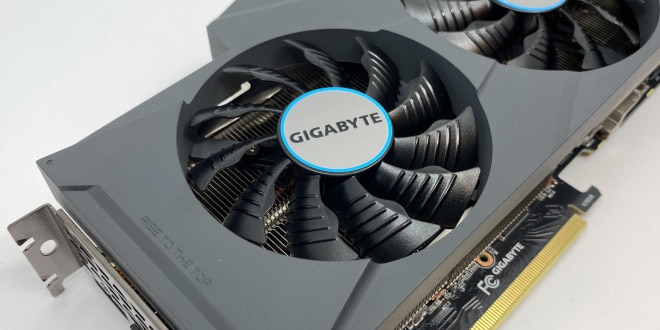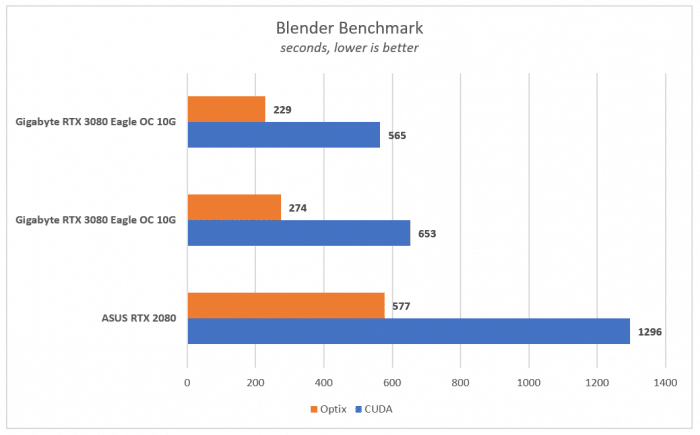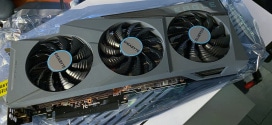Blender
Before getting to the games we will look at Blender. The reason is quite simple: everything points to the new Series 30-cards to be great cards for content creating, the RTX 3090 in particualr due to its 24 GB of memory.
Blender is the free and open source 3D creation suite. It supports the entirety of the 3D pipeline—modeling, rigging, animation, simulation, rendering, compositing and motion tracking, even video editing and game creation. Advanced users employ Blender’s API for Python scripting to customize the application and write specialized tools; often these are included in Blender’s future releases.
The Blender benchmark renders a bunch of scenes and displays how long it takes to render each. In the table below I’ve summed up all the different scenes rendering times in seconds. A lower score is better.
NVIDIA OptiX is a domain-specific API designed for accelerating ray tracing. It provides a complete package with programmable ray generation, intersection and shading while using RT Cores on NVIDIA RTX GPUs for accelerating Bounding Volume Hierarchy (BVH) traversal and ray/triangle intersection testing.
The biggest decrease in time comes when using CUDA for rendering where the total time of rendering all the scenes are reduced by almost 100 seconds. When switching to the Optix API we also see a similar decrease. In both cases you get around 13-16% decrease in time to render all the scenes.
 Bjorn3D.com Bjorn3d.com – Satisfying Your Daily Tech Cravings Since 1996
Bjorn3D.com Bjorn3d.com – Satisfying Your Daily Tech Cravings Since 1996








